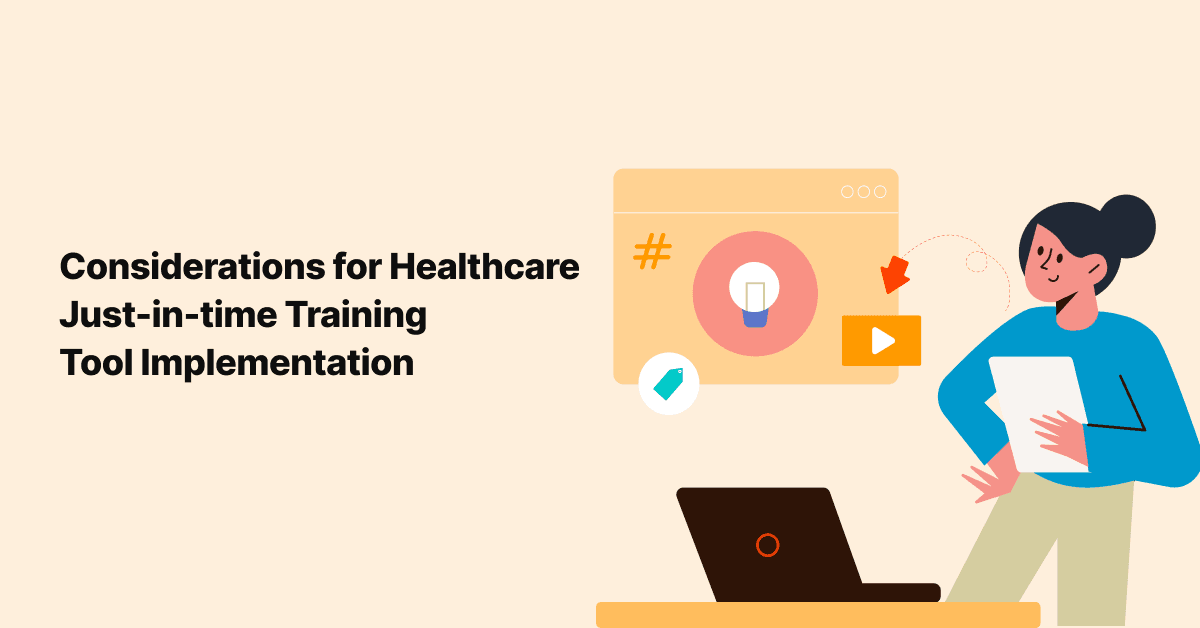
Dealing With Physician Burnout
According to a healthcare research, “Four out of five physicians say they are burned out right now.”
For quite …

The use of software in healthcare has become all the more prominent with COVID-19. In fact, health information technology is even believed to improve healthcare by reducing the number of errors, enhancing clinical outcomes, easing care coordination, improving practice efficiencies, and tracking data over time.
Having mentioned the importance of technology, it is critical to note that when technology is not used well, it tends to become an additional burden. A survey conducted by the National Institute of Health on physician burnout states that among EHR users, 70% reported Healthcare IT-related stress, with the highest prevalence in primary care-oriented specialties, often the front line. This states the importance of having a solution that could help your physicians beat the burden of technology.
In this article, you will discover:
A Just-in-Time (JIT) training tool is a digital solution that supports the adoption of enterprise applications and improves end-user performance by providing “just-in-time” training in the workflow through self-help resources. It also boosts the end-user satisfaction as it walks them through the application using step-by-step instructions that help them easily address any specific issue in the workflow. A supportive tool like this could be the key component of your Healthcare Application Support Strategy.
When it comes to healthcare application training and support, historically, healthcare depended on Service Desks. However, one of the major issues with Service Desks or Help Desks is that there are a lot of delays in responding to questions, and issues are routed to different agents on different occasions, often lacking a cohesive approach. Another important aspect to consider is that service desks are costly, sometimes as high as $20 per call!
Historically, individual training and At-the-elbow (ATE) support have been very effective and positively received. While this was very convenient for the clinicians, it came at a huge cost and did not scale well. Considering practical and financial difficulties that come with these application training approaches, it is best to consider a modern and cost-effective solution like a Just-in-Time training and support tool for healthcare organizations. It is designed in such a way that it facilitates seamless application adoption by providing just-in-time, in-workflow, contextual training & support.
The following are some reasons that emphasize the importance of implementing a Just-in-Time training tool in a health system:
A Just-in-Time training tool can help your health system in the following ways:
When the right healthcare Just-in-Time training tool is implemented, it could do wonders for your healthcare organization. Therefore, if you are considering a Just-in-Time training tool for your organization, you should review the considerations listed in the next section.
Even before thinking about implementing a Just-in-Time training tool for healthcare, it is important to have some clarity on quite a few nuances. Everything that needs to be considered can be categorized into four major categories which are:
The ability to provide resources that are easily accessible in the moment of need is one of the key benefits of a Just-in-Time training tool. The intent here is to simplify the use of the enterprise application. Therefore, when it comes to the resources that the Just-in-Time training tool offers, it would be better to ensure the following features are available:
A Just-in-Time training tool is expected to be fueled by an AI-powered smart search that:
The training and support content that the Just-in-Time training tool provides also plays a very crucial role in guiding the users of the enterprise application. Hence, taking a look at the creation and use of the content, form two important aspects that need to be considered before implementing a Just-in-Time training tool in healthcare.
When it comes to the creation of content for the training and support resources, your Just-in-Time training tool must ensure the following:

When discussing the creation and edits of content using user-generated videos and documents, it is important to think about having a built-in approval process that would establish governance over all the training content made available through the Just-in-Time training tool.
To ensure the flexibility of use in all work environments, the training content must ensure the following:
Reporting generally helps you understand who is accessing the information and indicates how well the Just-in-Time training tool is adopted in your healthcare organization. When considering reporting, the following must be ensured:
These are the four key considerations when it comes to the implementation of a Just-in-Time training tool in a healthcare organization. One important aspect to keep in mind is that the task doesn’t end with the implementation; rather, the implementation is just the starting point of the support strategy, and there are a lot of other things that require attention, like keeping your users informed and prepared to work with Just-in-Time training tool, keeping all stakeholders involved, establishing governance over the content created and considering the key metrics to measure the success of the Just-in-Time training tool.
Join over 3,200 subscribers and keep up-to-date with the latest innovations & best practices in Healthcare IT.

According to a healthcare research, “Four out of five physicians say they are burned out right now.”
For quite …

The need for software support in healthcare is inevitable, especially with the transition to EMRs. Service …

The implementation of an EHR is certainly a breakthrough for your health system; however, clinicians are still …